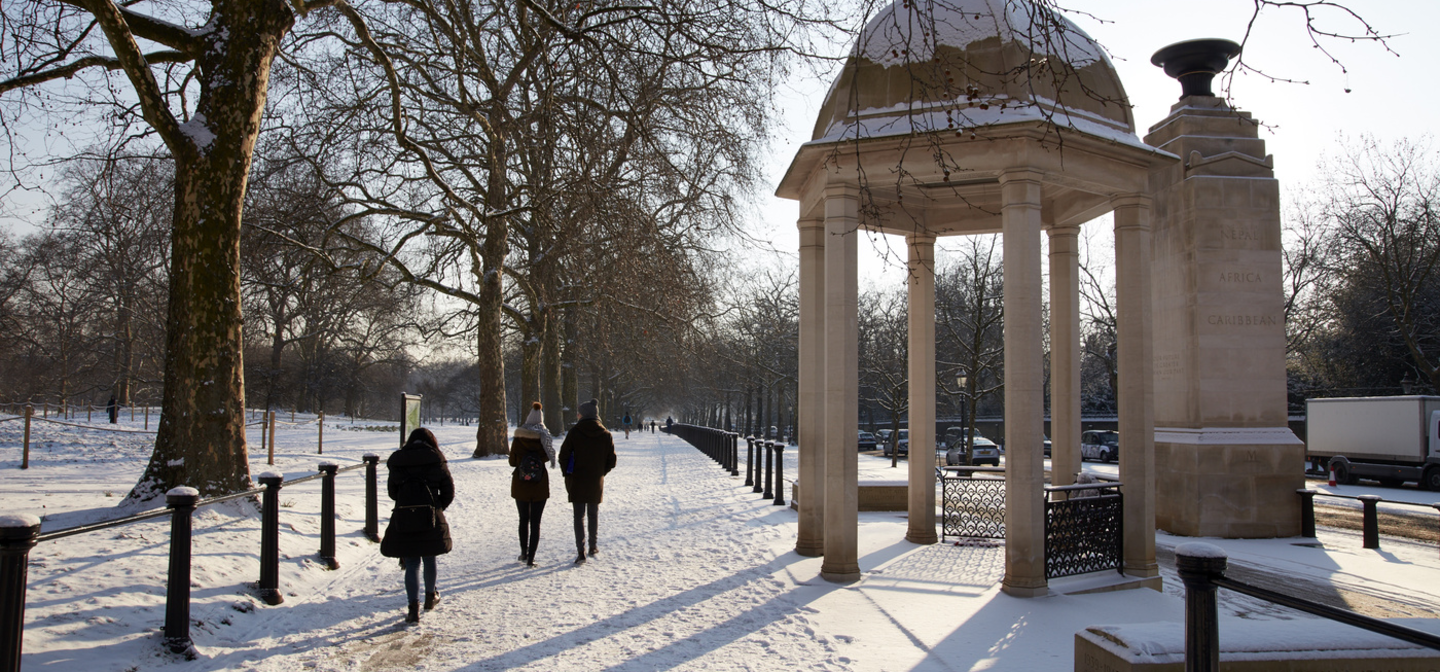
History of The Green Park
Key information
The Green Park is one of the most tranquil of all the Royal Parks.
Its history, however, is anything but.
This is a place of crowd-pleasing revels, royal firework displays, exploding temples and highway robbery.
The ‘missing link’ in a chain of Royal Parks
The Green Park covers 40 acres, linking St James's Park and Hyde Park in a chain of Royal Parks. In 1660, King Charles II wanted to be able to walk all the way from Hyde Park to St James's Park without leaving royal soil. So, he acquired land between the two established parks, put a brick wall around it and gave The Green Park its first name: Upper St James's Park.
The Green Park and the Stuarts
The King soon fell in love with his new park, entertaining visitors with royal firework spectaculars and crowd-pleasing festivals.
The King also commissioned one of the first ice houses in Britain here so that in summer he could give his guests cold drinks, creating one of the earliest Royal Parks kiosks. He even took his daily walk or ‘constitutional’ in the park each day, giving ‘Constitution Hill’ its name. On these walks, the King was accompanied by his pet spaniels.
But in the 1700s, much of The Green Park was still unlit and semi-rural – providing the perfect opportunity for highwaymen and robbers. Even writer Horace Walpole was held up by the infamous highwayman, James MacLaine, in The Green Park.
The first royal Party in the Parks
The park contained two dazzling ‘showpiece temples' – The Temple of Peace, built to store the thousands of fireworks needed for performances of Handel’s famous ‘Music for the Royal Fireworks’ and the Temple of Concord, which actually revolved.
The Temples of Peace and Concord were anything but. Both were destroyed when festivities in the park got out of hand. In 1749 the Temple of Peace exploded when 10,000 fireworks went off in a matter of minutes and three people were killed. And in 1814 the Temple of Concord also burnt to the ground during the Prince Regent's gala.
The Green Park and the Georgians
Queen Caroline of Ansbach, wife of King George II, made her mark on the park in the 1700s. In the 1720s, she commissioned the ornamental Tyburn Pool and a reservoir, named the Queen’s Basin. Both became fashionable places to see and be seen.
The 1800s– creating The Mall and Wellington Arch
The Royal Park as we know it opened to the general public in 1826.
In the 1820s, John Nash re-scaped The Green Park as part of his project to landscape St. James 's Park nearby. Trees were planted for the first time and Constitution Hill was straightened to make a processional route leading onto The Mall, outside Buckingham Palace.